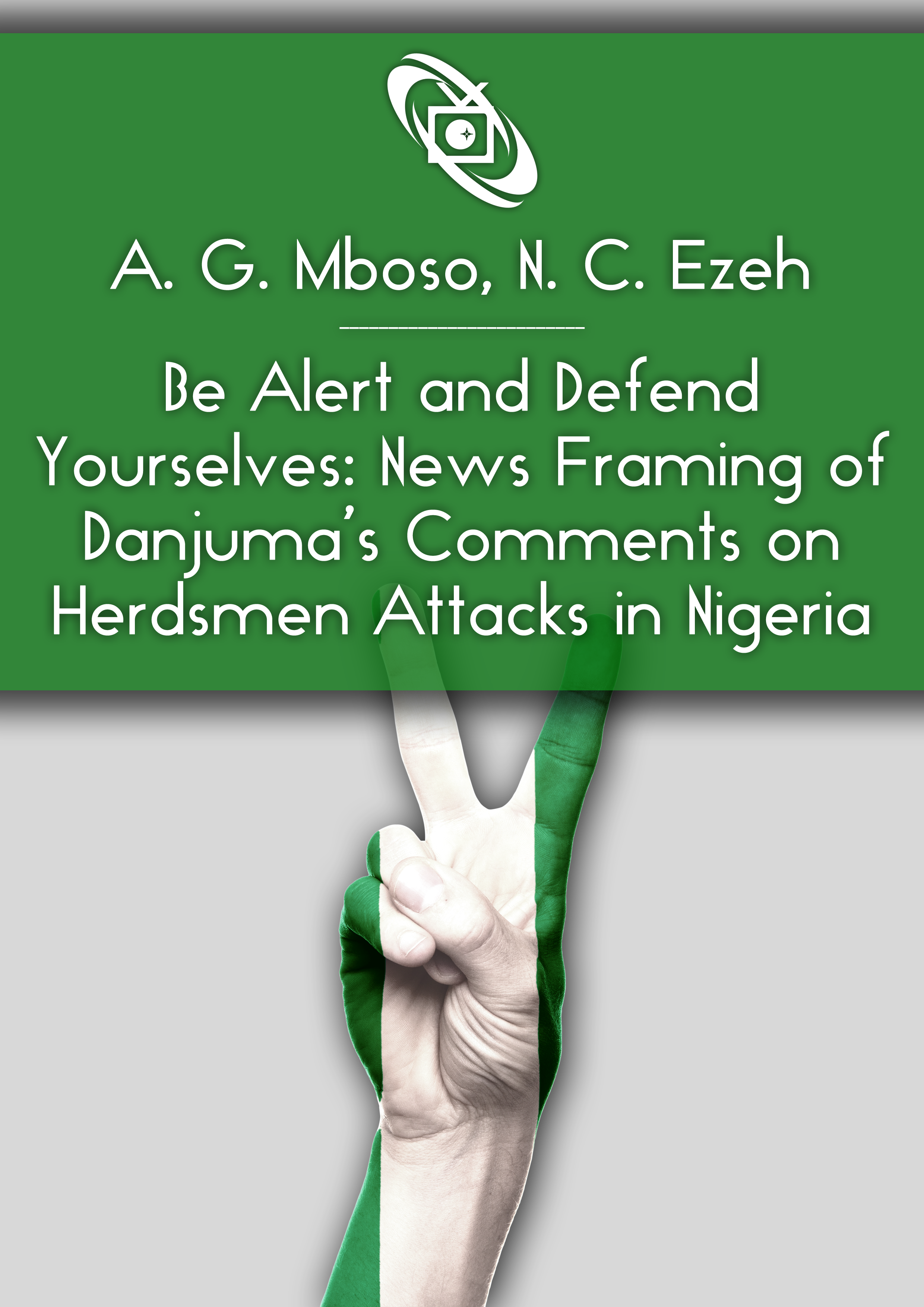Abstract
Nigerian society has been plagued recently by terrorism and insecurity including herdsmen and farmers’ clash which resulted in ruthless killing of citizens. General T.Y. Danjuma, former Chief of Staff of Nigeria, while speaking at the maiden convocation and 10th anniversary celebration of Taraba State University on 24th March 2018, alleged that the Armed Forces were conspiring with herdsmen to kill innocent Nigerians. He called on Nigerians to defend themselves, since the government and the military failed in their security function. The military on the hand was of the view that Danjuma’s call for Nigerians to defend themselves against herdsmen attacks is an invitation to anarchy. This study used the Framing Theory to analyze how two Nigerian dallies (Punch and Vanguard newspapers) framed the news to ascertain if the reports favour Danjuma or the military. The study suggests that the news media was very positive about Danjuma’s position; the issue of self defense was salient while the call for anarchy was de-emphasized.
References
Abdur-Rahman O. O. (2013). Media and security in Nigeria. European Journal of Business and Social Sciences, 2(9), 20-38.
Bjerke, P. (2016) Mediated spies; cold war espionage affairs in European Newspapers. In NORDMEDIA; Media Presence and Mobile Modernities. Christa Christensen & Anne Jerslev ed. (115-130) Sweden: Ale Tryckteam.
Boukes, M., Boomgaarden, H. G., Moorman, M., & De Vreese, C. H. (2015). Political news with a personal touch: how human interest framing indirectly affects policy attitudes. Journalism and Mass Communication Quarterly, 92(1), 121-141.
Carter M. J. (2013) The Hermeneutics of Frames and Framing; An Examination of the Media’s Construction of Reality
Dunwoody, S., & Peters, H. P. (1992). Mass media coverage of technological and environmental risks: A survey of research in the United States and Germany. Public Understanding of Science? 1(2), 199-230.
Dunaway, J., Branton, R. P. & Abrajano, M. A. (2010). Agenda setting, public opinion, and the issue of immigration reform. Social Science Quarterly, 91(2), 359-378.
Entman, R. M. (1993). Framing: toward clarification of a fractured paradigm. Journal of Communication, 43(4), 51-58.
Jonsson, A. M. & Karlsson, M. (2016). Cooperation, media and framing processes; insight from a Baltic Sea case study In NORDMEDIA; Media Presence and Mobile Modernities. Christa Christensen & Anne Jerslev ed. (41-55) Sweden: Ale Tryckteam.
Jorndrup, H. (2016) News framing in a time of terror. In NORDMEDIA; Media Presence and Mobile Modernities. Christa Christensen & Anne Jerslev ed. (81-99) Sweden: Ale Tryckteam.
Lykidis, A. (2005). Film studies. Georgia: Spark Educational Publication
McQuail, D. (2005). Mass Communication Theory (5th Ed.).Thousand Oaks, CA: Sage Publications.
McQuail, D. (2010). McQuail's Mass Communication Theory. London: SAGE Publications.
Matthes J. (2011). Frames in political communication: towards clarification of a research program. Retrieved from https://www.researchgate.net/publication/281727849
Reese, S. D., & Buckalew, B. (1995). The militarism of local television: The routine framing of the Persian Gulf War. Critical Studies in Media Communication, 12(1),40–59.
Pate, U. & Bashir, A. (2012). Media institutions and the process of democratization in Nigeria; perception, responsibility and challenges. Journal of Communication and Media Research, 4(1), Pp. 31-40.
Sadaf (2011). Public perception of media role International Journal of Humanities and Social Science, 1(5), 228-236
Scheufele, D. A. & Tewksbury, D. (2007), Framing, agenda setting, and priming: the evolution of three media effects models, Journal of Communication, 57(1), 9–20.
Tucker, L. R. (1998). The framing of Calvin Klein: A frame analysis of media dis-course about the August 1995 Calvin Klein Jeans advertising campaign. Critical Studies in Mass Communication, 15(1), 141–157.

This work is licensed under a Creative Commons Attribution-NonCommercial-NoDerivatives 4.0 International License.

